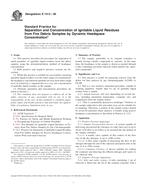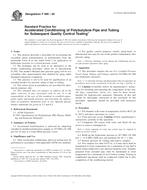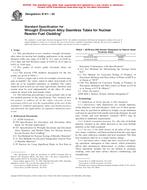1.1 This test method covers the comparison of waterborne petroleum oils with oils from possible sources by means of fluorescence spectroscopy (1). Useful references for this test method include: (2) and (3) for fluorescence analysis in general and (4), (5), and (6) for oil spill identification including fluorescence.
1.2 This test method is applicable to crude or refined petroleum products, for any sample of neat oil, waterborne oil, or sample of oil-soaked material. Unless the samples are collected soon after the spill occurs, it is not recommended that volatile fuels such as gasoline, kerosine, and No. 1 fuel oils be analyzed by this test method, because their fluorescence signatures change rapidly with weathering. Some No. 2 fuel oils and light crude oils may only be identifiable up to 2 days weathering, or less, depending on the severity of weathering. In general, samples weathered up to 1 week may be identified, although longer periods of weathering may be tolerated for heavy residual oils, oil weathered under Arctic conditions, or oil that has been protected from weathering by collecting in a thick layer.
1.3 The values stated in SI units are to be regarded as standard. No other units of measurement are included in this standard.
1.4 This standard does not purport to address all of the safety concerns, if any, associated with its use. It is the responsibility of the user of this standard to establish appropriate safety and health practices and determine the applicability of regulatory limitations prior to use.
Product Details
- Published:
- 05/01/2011
- Number of Pages:
- 5
- File Size:
- 1 file , 110 KB


